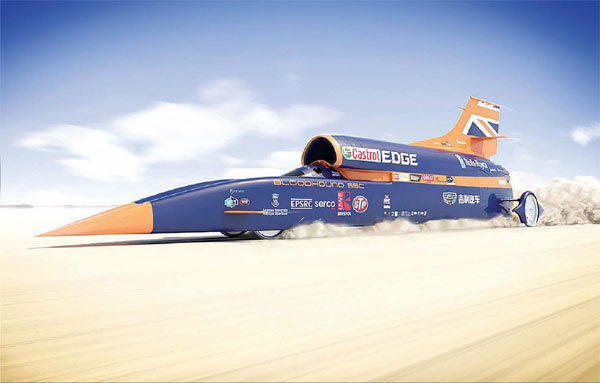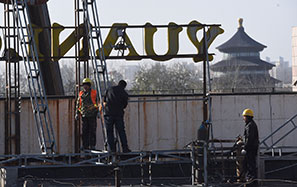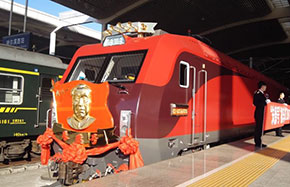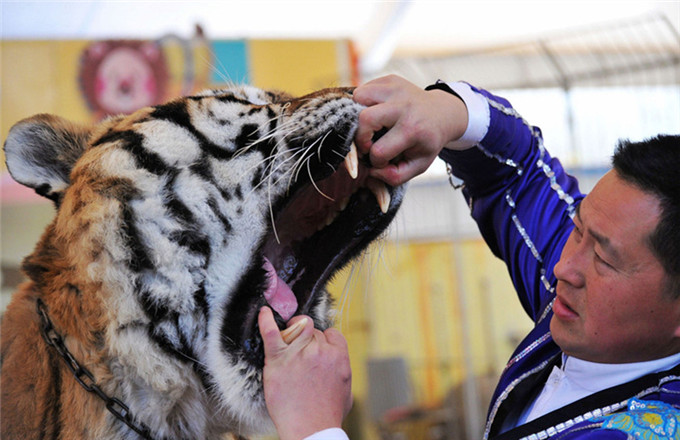Speed demon
The Bloodhound SSC is set to become the world's first supersonic car - breaking 1,000 miles per hour in the process
It all started on a very routine day at London's Science Museum in October 2008, when Richard Noble, Andy Green and a team of carefully assembled specialists announced their latest plan to smash the world land speed record with an iconic project.
Bloodhound SSC, the most complex racing car ever designed, was born.
Built in the United Kingdom by a team of Formula One and aerospace experts, it aims to inspire a generation about science and technology - and bring the world to a standstill later this year in reaching 1,000 miles per hour, blazing past the current land speed record, on the Hakskeen Pan in South Africa's Northern Cape.
|
Bloodhound SSC is set to shatter the land speed record. Flock London / Flock and Siemens |
Bloodhound is above all, a battle with physics, a journey into the unknown.
It contains a jet from a typhoon fighter, a rocket hotter than a volcano, huge metal wheels spinning at 170 times per second and the equivalent of 135,000 horsepower. Blink and you'll miss it. The Bloodhound will cover a mile in just 3.6 seconds - literally faster than a bullet. And at that speed, there's no margin for error. Already, more than 300 people have moved more than 16,000 tonnes of rocks by hand to create the 12-mile racecourse on a dry riverbed.
The first target for driver and wing commander Green - who is also a British Royal Air Force fighter pilot, a mathematician, a former Oxford University scholar and the first person to break the sound barrier on land - will be a new record of 800 miles (1,287 km) per hour in this stunning hybrid weighing eight tonnes.
But he and Noble, Bloodhound's project director, start with a distinct advantage. They are part of the team that raced ThrustSSC, a British jet-propelled car which became the first land vehicle to officially break the sound barrier in October 1997, traveling at 763 mph across Nevada's Black Rock Desert. (Noble himself has broken the world land speed record with his earlier car, Thrust 2, which reached 633 mph in 1983).
Bloodhound essentially has the same construction as a Formula One car, with carbon fiber, a honeycomb that's twice as thick, and parts of the car reinforced with ballistic protection. It feels like an extraordinary mix of old-school engineering and high-tech sci-fi slick.
Indeed, it's all so new and groundbreaking that no matter how rigorous Bloodhound's construction, there will always be an unknown quotient, according to chief designer Mark Chapman. "When the Bloodhound goes for the record, we don't really know what it will be like," he professes. "We're not (even) sure what a safe observation distance from a vehicle traveling at Mach 1.4 will be - or how far the shock wave will spread out sideways from the car."
By all accounts, Bloodhound can reach a top speed of 1,050 mph. But to claim the record, the car must turn around and make a second run within an hour. Physical space is an issue, too. "You can just run out of desert," says Chapman. All of which begs another engineering question: how do you stop a car moving at 1,000 mph?
The Bloodhound has three means of deceleration. At 800 mph, perforated air brakes swing out from the fuselage; two parachutes can deploy at 600 mph if extra slowing is needed; and at 200 mph, driver Green will apply the steel friction brakes.
Slowing down is just one concern.
The idling jet engine will continue to produce heat at the end of the run, which Green must dissipate by steering in a huge arc while slowing to a stop. Whether that's all possible, no one knows yet. "We can't really test that until we get to South Africa," says Chapman. "For a lot of things, the car is the test bed."
As such, Bloodhound SSC has been the catalyst for a raft of cutting-edge research in fields such as aerodynamics, computational fluid dynamics, materials technology, composite manufacturing and sustainable high-tech engineering. In short, it's a game-changer.
The Bloodhound doesn't have tires; it runs on precisely fabricated aluminum discs. A forging process breaks down the crystalline structure of cast aluminum, making it denser and stronger. This requires heating the aluminum to more than 700 F (371 C), molding the metal into discs with a 3,668-tonne press and then milling the blanks to the finished specs: 198 pounds (90 kg), 36 inches (11 meters) in diameter.
Thus, the wheels not only have to bear the car's 17,000 pounds of weight, but also to hold together while experiencing 50,000 pounds of radial G-forces at 10,200 rpm. That means their shape is as crucial as their strength. Recent testing at the Hakskeen Pan revealed that twin-keel-shaped rims like those on the Thrust SSC would break through the site's soft surface, so the Bloodhound will use a rounded wheel profile.
To accomplish this project, investment has been key to its completion and a plethora of A-list sponsors have rallied behind the Bloodhound: Rolls-Royce, Jaguar, Castrol, Rolex (which has made all the instrumentation and dials for Bloodhound's cockpit) and - since last year - Chinese car manufacturer Geely, which also owns Volvo as well as British firm Manganese Bronze, the maker of London's iconic black cabs. Through the partnership, Geely will offer automotive technology used in Bloodhound, will allow use of Geely Group vehicles in South Africa throughout the record campaigns, will provide design and engineering support, and will help promote Bloodhound across Asia.
"We could not have a better partner than Geely," enthuses Noble. "Not only are they an international technology company with tremendous vision and capability, they also share our passion for innovation and education. Their support, both technical and financial, means we can plan our record-breaking challenge with confidence. It also means we can take our STEM (science, technology, engineering and maths) inspiration message to a vast new audience, which is great for science and engineering, but also for promoting Great Britain."
Noble's enthusiasm is shared equally by Li Shufu, chairman of Zhejiang Geely Holding Group. "We are proud and excited to be part of this extraordinary team," says Li. "Geely shares the same challenging spirit and passion for pushing technological barriers as the Bloodhound project. Since day one, we have been committed to breaking technology barriers at Geely - and working with Project Bloodhound will help further our mutual technology breakthrough to an international audience. It also means we can tell millions of young people, in China and around the world about the opportunities presented by studying science, technology, engineering and mathematics. That is what makes this 'engineering adventure' so special - and why we wanted to be part of it."
Green, the heroic 54-year-old driver, says the goodwill and inspiration that Bloodhound represents is a major motivating factor. "I've met graduate engineers who are adamant that our previous record was what inspired their career choice as youngsters; that sort of thing makes all the effort worthwhile," he says. "Bloodhound SSC will be so much faster and, we hope, will fire up every school kid about science and technology. We're going to invite everyone to follow our adventure in this, the most exciting and extreme form of motor sport - the world land speed record. Both as a mathematician and as a Royal Air Force fighter pilot, I can't think of anything better." Can you?



















